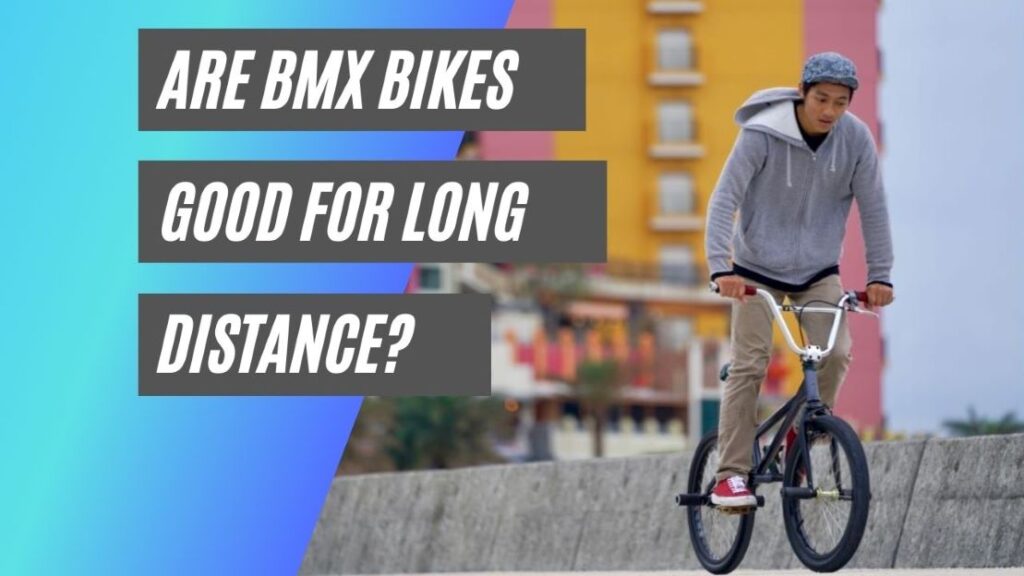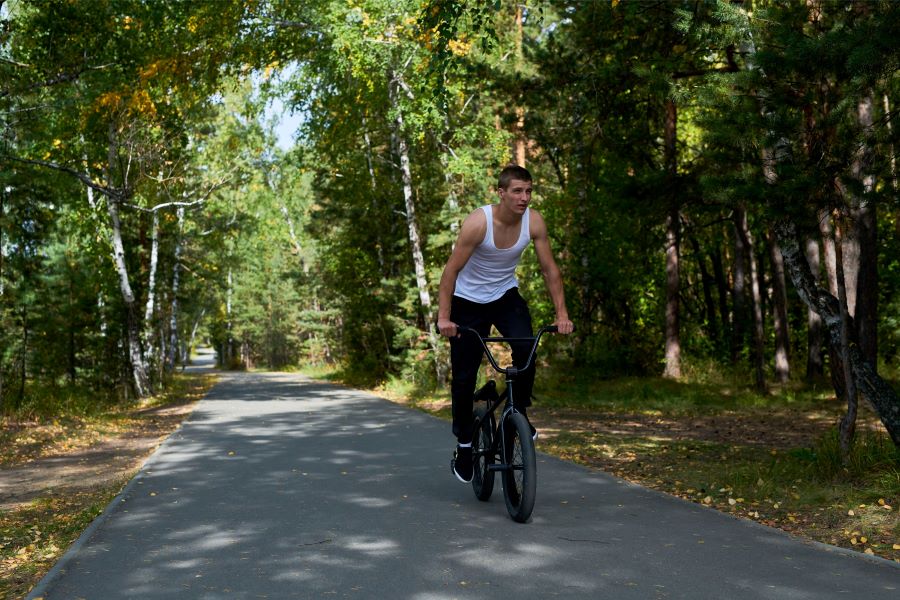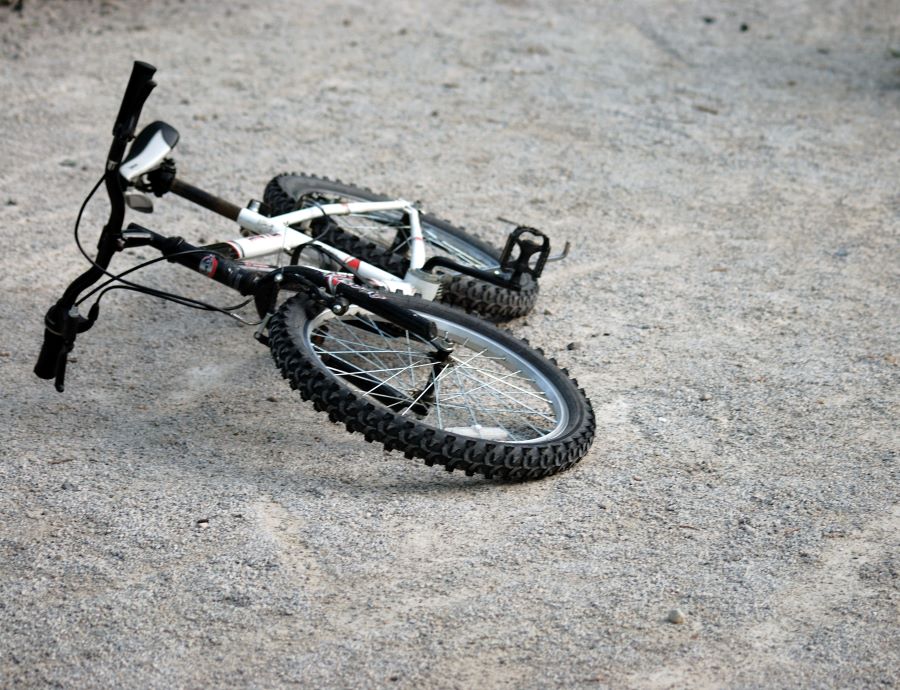This post may contain affiliate links. If you click an affiliate link and make a purchase, I may earn a commission. Also, as an Amazon Associate, I earn from qualifying purchases.--
Can BMX bikes work on long-distance trips?
BMX bikes do not work well with long distances or commutes, but certain exceptions could exist. In general, a BMX bike’s frame, lower tires, and length contribute to its inability to ride long-distance.
Often, they can be compared to skateboards because of their use in tricks and stunts.
Yet, despite this, many BMX riders still use their bikes for commuting. Though using them is not impossible, it is still challenging to ride BMX bikes on technical terrain.
In this post, I’ll take a look at:
- Do BMX bikes work for long-distance?
- Can you commute on a BMX bike?
- What are BMX bikes not suitable for?
- Can you convert BMX bikes for long distance?
- Can you ride BMX bikes on roads?

Do BMXs Work For Long-Distance?
Well, no. BMX bikes aren’t designed for long distances, and most riders prefer them for quick, off-road journeys or tricks. But, if need be, they can still be used; it would just be really uncomfortable.
For this reason, many people can still use them for commuting purposes despite that not being their intended purpose.
As many may know, you have to extend your legs to the fullest when riding long distances. So, one of the main reasons BMX fails at long-distance is their restrictions in this regard.
With BMXs, you can’t extend your legs fully, and you end up having to put more effort into pedaling. This causes you to wear out sooner.
Not to mention, most BMX bikes are ridden while standing up.
As a result, it’s nearly impossible to find someone with the stamina to ride for an hour while standing up. It’s simply too tiring and not worth the trouble when simpler alternatives exist. (Source)
With that being said, with a few modifications, these bikes can be adapted for more comfortable riding. Their design specializes in maneuvering that is often better and faster than most other bikes.
And, its small back end can be beneficial for cornering around complex areas at higher speeds.

What About Daily Commutes?
If long-distance trips don’t work, it might be worth considering daily commutes.
In this regard, BMX bikes are much more popular. Many people don’t find them as restrictive, and they often work well for this kind of use. Plus, they’re ideal for people trying to save money.
First off, BMX bikes have smoother tires. Other than the occasional uphill route, these tires fit easily into an urban landscape.
Besides that, by nature, BMX bikes are also often smaller than an average bicycle. This is great for public transport, where you could just hop on with your bike in your hand the whole way.
Furthermore, the average BMX bike is usually cheaper than a typical foldable or road bike. In many ways, people even compare them to skateboards. They can maneuver faster and better than most bikes.
And, their small back end is really beneficial for cornering or getting around intricate streets at high speeds.
However, I don’t want everyone to expect perfection from these bikes. They still aren’t the most comfortable alternatives. And, they are certainly challenging for people riding on paved surfaces or uphill.
Though it may be tiring to commute to work daily on a BMX bike, certain types can still be of decent quality.
So, if you really must invest in a BMX bike, it would be worth considering a premium park or street riding bike. Alternatively, you could also convert your current BMX through the methods taught above.
What Are BMX Bikes Not Suitable For?
BMX bikes are not suitable for traveling uphill or across paved roads. In general, this is true for any kind of cyclist.
It would always be hard traveling uphill, but BMX bikes don’t make it easier. So, doing so is a bad idea for two reasons: lack of comfort and safety.
For starters, BMX bikes have small frames. And, as often mentioned throughout this article, this means you have to stand while cycling.
Doing this while cycling over hills is particularly really dangerous. It can easily result in you toppling downhill. And in general, it can even cause a massive strain inside your back. This causes many BMX cyclists to suffer from immense back pain from cycling upward frequently.
Besides that, BMX bikes usually don’t have gears.
This leaves you with no choice in the matter. You’d just be forced to face the bumpy terrain without much to cushion the effects.
So, if you’re commuting through rocky terrain, you’d just have to bear with a painfully long experience.
Other than that, the seats of BMX bikes are also worth considering. Once again, BMX bikes aren’t designed to prioritize comfort because riders don’t even sit on them that often while cycling.
So, if you’re battling a steep hill, you won’t find the saddle as comfortable as a typical bike. Since the saddle is also low, frequent use could hurt your knees.
Last but not least, there are numerous safety concerns with riding a BMX bike. Besides the dangers of riding up hills and their lack of gears, most BMX bikes also don’t have breaks!
This is an obvious red flag while traversing rough terrain. You should never attempt this.
And, if your BMX bike does have brakes, they probably aren’t very durable either.
Can you Convert BMX Bikes for Long-Distance?
As brushed upon earlier, it is possible to make BMX bikes compatible with long distances.
However, it’s only feasible if you don’t have much choice. The riding experience would still not be as ideal as an off-road bike.
But, if you’re still interested, the following are a few ways you could make your BMX bike more suitable for technical terrains:
Seats
Seats should be the first concern while attempting the transition. When riding for extended periods, your comfort is denoted by how comfortable your saddle is.
And, if your seat isn’t comfortable, you could try raising the seat or changing it.
Likewise, you should consider investing in higher seats. When doing so, I recommend opting for seats that reach waist height. Higher seats are more likely to cushion the impacts from bumps during technical rides.
And, in general, they’re much more suited for riding purposes on off-road terrain.
Investing in your Bike
Maybe consider a padded seat or a longer frame? Either way, if you’re seeking true comfort, it’s worth spending a little. As stated, these bikes aren’t designed for technical terrain.
So, you have to make them more adaptable somehow.
Tires
Often, BMX bikes would be found with road tires. These are great options for rocky landscapes, but they tend to grip the ground a bit less. Instead, if your terrain consists of mostly mud or sand, I recommend opting for off-road tires.
Brakes
Last but not least, adding a U-brake onto the back wheel would be a commendable installation. Since you’re expecting a dirt route, standard brakes just won’t cut it.
U-brakes are better as they have two arms that go across each other and meet the tire. These arms are attached to cables that are maneuvered from the handlebars.
With that being said, U-brakes aren’t even that hard to install. You can have the job done with just some simple bike tools.
What About Roads?
Commuting long distances with a BMX bike on a paved road may be a different story.
In this case, yes, it is somewhat possible to commute for extended periods. In particular, BMX bikes were designed with pavements and roads in mind.
And, being the ideal choice for street bicycling and stunts, it’s no wonder why their tire patterns are much smoother. This allows the average BMX rider to ride with less friction across the rough tarmac of the street.
However, they still aren’t the best alternatives for longer commutes. One crucial reason for this is their size. BMX bikes are much smaller than your average bike.
This causes cyclists to stand up and cycle. And, as stated earlier, this can get tiring after a couple of hours of riding.

Are there Long-distance Rides that BMX Bikes could be adapted for?
BMX bikes aren’t all that bad for longer routes. In some cases, they may even thrive better. Though these benefits won’t be as ideal as a typical bicycle, it still means that BMX bikes aren’t entirely unsuitable.
On average, BMX bikes can work exceptionally well if you’re just traveling off-road for short trips. After all, they were built to be durable.
As a result, they can work well for commuting off-road if you have the right tires. As a bonus, these bikes are also ideal because of their lightweight design.
This, coupled with its superior handling, can help tons when bouncing off rough terrains.
Maintenance Tips
Knowing everything, if you’re considering using your BMX bike for long-distance commuting, there are a few maintenance tips you need to consider for regular use.
The following are a few of those considerations:
Checking your pedals
Cycling across rough terrain on a BMX is a dangerous game. So, you should try taking as many precautions as possible.
This includes checking whether pedals are secure before going out on a ride.
In particular, BMX bikes usually only have metal or plastic pedals. In these cases, I recommend tightening the screws to stop them from falling mid-ride or making annoying noises.
Tire pressure
A crucial tip to taking care of your bike would always be maintaining your tires. Specifically, tire pressures can be a delicate subject.
Too much air and your tire would be rock hard, whereas, too little can make your bike much slower.
Hence, I recommend contacting your bike’s manufacturer for the ideal tire pressure. They can even recommend the best tire type for your bike.
My advice for you would be to check your tires every once or twice a week when commuting.
Bars
Often, bars are usually just for racing or track riding. So, if you use your bike with bars daily for commuting, this can result in some wear and tear.
In consequence, I suggest that you check your bars often. Make sure that they aren’t loose or easily jiggle. And, if you think they’re not tight enough, you can use a wrench to double-check.
You should remember that loose handlebars can be a safety hazard and therefore, should be treated as such.
Bearings and Chain Maintenance
Checking the bearings and chains should be a regular occurrence. They should always be correctly greased and maintained. As their functionality is what determines the abilities of most bicycles.
Wrapping up
At the end of it all, no, BMX would still work well for long-distance, not without a few changes or upgrades.
So, if you’re still persistent on continuing commutes on a BMX, you have to remember that these bikes aren’t like any other. They aren’t designed for the safety or comfort needed in commutes.
Therefore, I strongly urge protective headwear and appropriate reflectors for those traveling in the dark. Also, kneepads and elbow pads would are good precautionary measures.
Though BMX bikes may not be thought of as commuting bikes, it doesn’t mean they can’t work for you. With a few tweaks and some investment, a BMX bike is just as good at commuting as any other bike.
